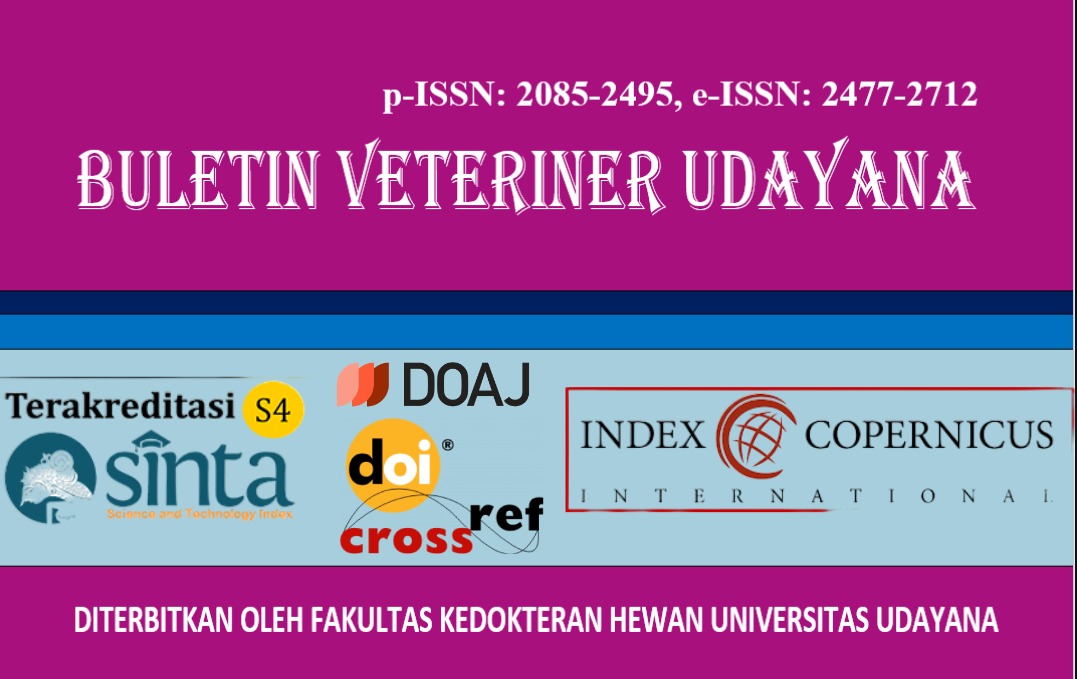ASSESSMENT OF ANIMAL WELFARE IN A BROILER FARM IN TANGERANG, WEST JAVA
DOI:
https://doi.org/10.24843/bulvet.2025.v17.i03.p61Keywords:
animal walfare, Broiler, poultry, open houseAbstract
Animal welfare has become an essential consideration in modern livestock production, particularly in broiler chicken farming. The assessment of broiler welfare aims to minimize factors that may cause stress, discomfort, or health disorders, thereby enabling timely interventions. Ultimately, this contributes to improved broiler performance. In this paper, the researchers conducted an observational study evaluating animal welfare in an open-house broiler farming system located in Tangerang, West Java. The assessment was carried out on a commercial-scale poultry farm using an observation sheet adapted from the Animal Welfare Indicators (AWIN) protocol and the Welfare Quality® framework, both of which are based on the principles of the Five Freedoms. The evaluation yielded the following scores: freedom from hunger and thirst achieved an optimal score of 90, freedom from discomfort scored 58, freedom from pain, injury, and disease reached another optimal score of 60, freedom to express normal behavior also reached the maximum value of 45, and freedom from fear and distress received a score of 39. Overall, the findings indicate that broiler welfare in the open-house system falls within the “good welfare” category, with a total score range of 57–79. However, improvements are still feasible. The study recommends targeted efforts to elevate welfare standards to the “very good” category by addressing weaker aspects, particularly through enhanced understanding of broiler welfare practices and improved handling procedures during transportation.




